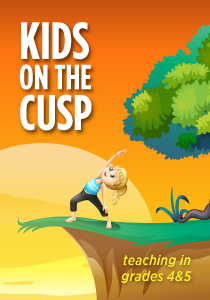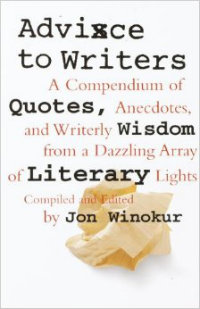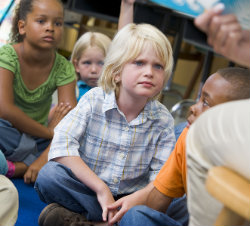Modeling Helps Students Read Like Writers
A MiddleWeb Blog
 A few weeks ago, a dear friend popped by with a gift for me.
A few weeks ago, a dear friend popped by with a gift for me.
She knows that I am an aspiring novelist, and thought Advice to Writers: A Compendium of Quotes, Anecdotes, and Writerly Wisdom from a Dazzling Array of Literary Lights, compiled and edited by Jon Winokur, might provide me with inspiration to pursue my dream more actively.
As I sat down to explore the book recently, I did what any good reader and writer would do. I started at the cover, then perused the table of contents, eventually arriving at the Introduction.
 I was inspired all right, but not to get back to work on my book. Instead, Winokur’s introduction inspired me to sit down with my own writers – my students – and share some ideas from his book, ideas about how we learn to write.
I was inspired all right, but not to get back to work on my book. Instead, Winokur’s introduction inspired me to sit down with my own writers – my students – and share some ideas from his book, ideas about how we learn to write.
The message in the introduction is clear. We “learn to write from other writers, from reading their novels, poetry, plays, biographies. But you have to read like a writer.”
More modeling – less teaching
This philosophy is helping me learn to become a better “teacher” of writing, by not teaching too much. Being a writer with my class is helping them understand that, in order to sharpen our skills as writers, to hone our craft, we need to read like writers and write like readers.
This concept has always helped me in modeling reading, analyzing text out loud, and exploring the effectiveness of prose as I work to develop an effective Reading Workshop community. But applying the same idea to my lessons about writing is new.
This year, I am jumping in with my writers, modeling writing by writing. I am hoping that by watching me write, openly and honestly critiquing my prose, and asking them for their input, we will all grow as writers. I am hoping they will embrace the idea that we learn most about writing from each other.
Winokur’s introduction reminds us that “a writer reads critically, noting what works and what doesn’t…quibbling about the choice of a word here and the use of a semicolon there, always judging….”
And… “A writer is always watching, even when he’s reading.”
Modeling narrative writing
 The definition of modeling varies. This topic is discussed in detail in teacher Amanda Minska’s online article, “Classroom Modeling: Scaffolding Learning or Stifling?” Minska asserts that, “Classroom modeling is not just one set method of instruction—it can be used in a number of ways, depending on the classroom and the philosophies and experiences of the educator implementing it.”
The definition of modeling varies. This topic is discussed in detail in teacher Amanda Minska’s online article, “Classroom Modeling: Scaffolding Learning or Stifling?” Minska asserts that, “Classroom modeling is not just one set method of instruction—it can be used in a number of ways, depending on the classroom and the philosophies and experiences of the educator implementing it.”
Her thoughts made me realize that modeling writing isn’t new to me. Over the years I have tried to help my students write for information or persuasion by showing them what a good topic sentence looks like, or by listing my reasons in order of their importance in an essay.
Modeling narrative writing, however – having my students sit on the rug in front of my interactive whiteboard, lights dimmed, while I sit at my keyboard in front of a curious audience – is a very different experience.
Free falling
So far it has gone well, but it is still a little scary not to know where each of our writing sessions may lead. With 21 writers, the wind of inspiration could take us in many directions. I have charted a course to guide us on our way, but the wind can change without notice, so I need to be able to glide with the currents.
The objective of our first session was to write a good beginning, a good lead.
 Just as a writer must hook his readers, I had to hook my class. The mini-lesson objective was to use dialogue to create a strong hook for the reader. My personal objective was to hook the kids, not only into the story I was about to tell, but into the magic of writing as well.
Just as a writer must hook his readers, I had to hook my class. The mini-lesson objective was to use dialogue to create a strong hook for the reader. My personal objective was to hook the kids, not only into the story I was about to tell, but into the magic of writing as well.
Personal narratives are simply stories, and who doesn’t love a good story. Fortunately, I had one in particular that I wanted to share with them. As they gathered on the rug in front of my interactive white board, I made my first attempt.
I opened up a word document and asked them to please read along quietly in their heads (so I could concentrate as a writer) as I told my tale. Then I began to type:
“What are you doing?” my friend Geoffrey’s voice inquired from the phone receiver I was holding to my ear.
“I’m painting my bedroom,” I replied.
“How long is that going to take?” he asked.
“Geez, I hope not much longer,” I grumbled, with more than a hint of frustration in my voice. I had been painting my room for three days now and hadn’t realized it would take so long.
“Um, I think you should take a break,” Geoffrey offered.
“Boy, I would love that,” I sighed.
“Good, because we are jumping out of a plane today, chick. I’m picking you up in forty-five minutes. Stop painting,” he giggled. Then he hung up.
“What have I gotten myself into?” I asked, as I put the paintbrush down.
When I turned to see the reaction, I was met with a few stares of disbelief, a handful of open mouths, and one or two “you-did-nots.” They were hooked all right. Mission accomplished.
“Now it’s your turn,” I smiled.
As my writers dispersed, each finding a comfortable spot to create their own hook, even my most reluctant writers seemed eager to begin the story they had chosen to share.
Developing the stories
Since that first lesson two weeks ago, we have written our way through many mini-lessons using this same approach.
 Mini-Lesson Objectives:
Mini-Lesson Objectives:
SWBAT: recognize the difference between a story that is too big to tell with sufficient detail and artistry (like “The Trip I took to Disneyland”) and a seed idea (like “My Ride on Space Mountain”).
SWBAT: Write a clear beginning, middle, and end to this seed idea, noting that the middle is the biggest part of the story (hence the need for two sections in our graphic organizers). Blank organizer – Filled-out organizer
SWBAT: Finish strong, leaving the reader with something to think about (as opposed to “That was the day we went to the zoo.”).
I ended strong on the last day of first draft writing. I left my readers hanging. They whined when they saw me hit the save button. I modeled well:
“Are you ready?” he screamed. I was, but I couldn’t speak. I just nodded.
Paul placed his right foot out onto the small platform attached to the wing of the plane. I waited for a split second, then stepped out and tucked my right foot next to his. Then I took a deep breath and brought my left foot out onto the wing. The wind was so strong that it was hard to get my foot placed down firmly. Paul quickly stepped out, securing my shaking legs into place as he shouted, “Here we go!”
He rocked forward once, then backwards once. This was the signal that we would be letting go on our next backward rock. We rocked forward one last time. I remember thinking, “This is it,” as I let myself fall into the sky.
Taking the plunge, details to follow
 Writing is about more than grammar and mechanics, but I hope to use the story I wrote to help us look at mechanics and writing structure too, along with word choice, the use of vivid descriptions, and the difference between revising and editing. Consulting editor Rebecca Alber shares similar observations here.
Writing is about more than grammar and mechanics, but I hope to use the story I wrote to help us look at mechanics and writing structure too, along with word choice, the use of vivid descriptions, and the difference between revising and editing. Consulting editor Rebecca Alber shares similar observations here.
Writing is sharing information and creativity with others. The mechanics will develop within their frontal lobes as they learn to read like writers and write like readers, free-falling into their own writing with a little careless abandon.


































Mare…..AWESOME article! Loved your examples, loved your humor…Mare